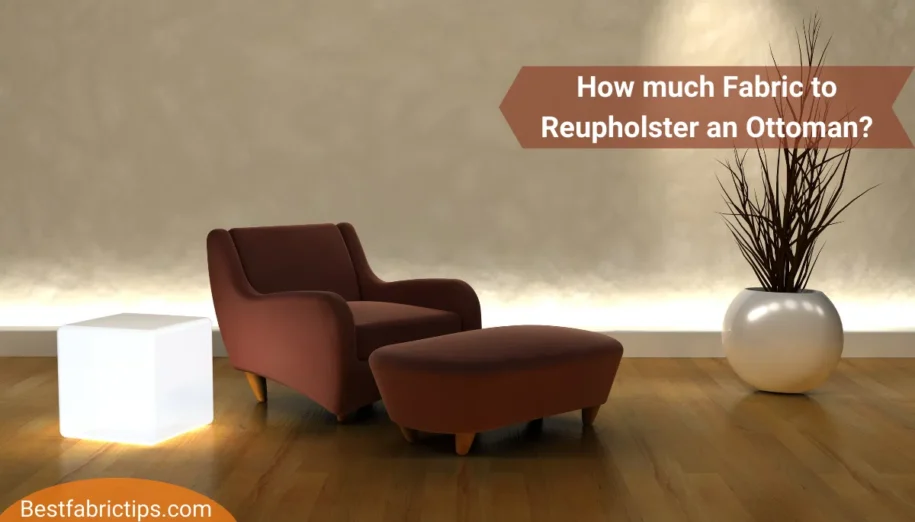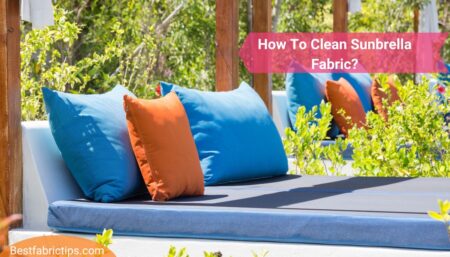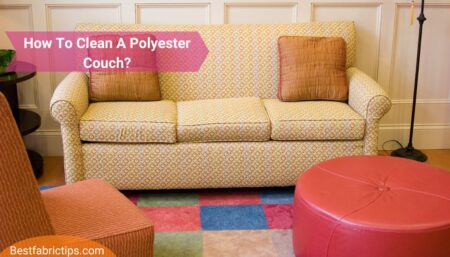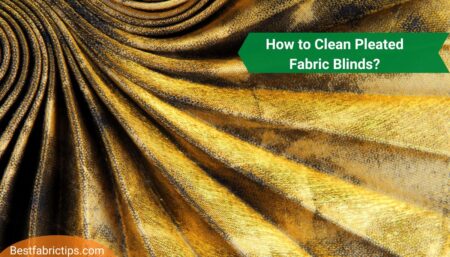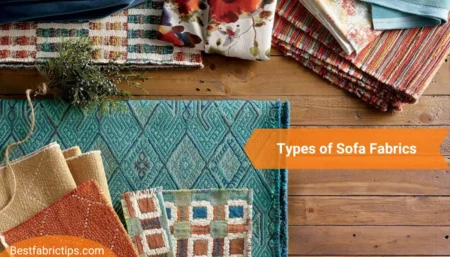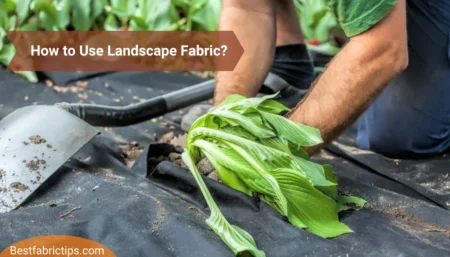Do you want to know how much fabric is used to reupholster an ottoman? When you have a mismatched or uncomfortable Ottoman at home, you may think about throwing it away. But you don’t want to throw it just like that because you have spent money on it. What if you can remake it while convert it into something more appealing and blended in the theme? Ottoman reupholstering is a simple and affordable method to give a tired-looking footrest a new lease of life for a reasonable price. Because if you want to change the design of a room in your home, you can reupholster it as per your desired theme. In addition it will allow you exactly what you’re looking for with minimal financial input.
- Before deciding to reupholster an ottoman, find out what actually are Ottomans?
- How To Choose Fabric to Reupholster an ottoman
- How much fabric do I need? Ottoman Reupholstering
- What sort of Ottoman do you want to Reupholster?
- Reupholster an Ottoman: How To Start This project
- Ottoman Reupholstering Instructions First
- Types of Ottomans
- 1. Standard Ottoman
- 2. Pouf Ottoman
- 3. Oval Ottoman
- 4. Cocktail Ottoman
- 5. Cube Ottoman
- 6. Square Ottoman
- 7. Rectangular Ottoman
- 8. Round Ottoman
- 9. Ottoman Coffee table
- Conclusion
Before deciding to reupholster an ottoman, find out what actually are Ottomans?
Ottoman furniture is both fashionable and functional. Ottoman pieces are wonderful for nearly any room in the house since ottomans may be used as side tables, foot stools, coffee tables, or even extra seating if necessary. Ottomans are also quite versatile and can be utilized in a variety of ways. Ottomans are functional pieces of furniture, not merely decorative items that assist to bring your living area together.
Sofa ottomans are available in a variety of shapes and sizes, including round, oval, and square designs. Because of this, ottomans may be used with practically any sort of home décor, whether it is classic or contemporary in style.
How To Choose Fabric to Reupholster an ottoman
Choosing the right fabric for reupholster is always one of the most crucial decision to make. Since you are looking forward to enhance your old ottoman’s look, it is necessary that the fabric you choose blends well with the existing furniture. Here are some useful ideas for choosing the reupholster, or upholster fabric!
How much fabric do I need? Ottoman Reupholstering
Ottoman reupholstering might be a little more challenging than other furniture. You will need to take measurements for the length and breadth of the top. While, you may also need to measure the circumference of each of the four legs. It is also possible that the fabric may need to be folded at various times throughout the job. Therefore, it is critical that you evaluate every measurement before beginning. The process of reupholstering an ottoman
- In order to determine the height, depth, and breadth of the ottoman’s lid/top component, use the following measurements: On one side of the panel, these dimensions are often found. Allow 10 inches to be added to each measurement as a buffer.
- Measure the height, depth, and width of each leg piece – do not include any decorative tassels or tacks! Add 8 inches for each leg’s allowance.
- Consider whether or not you want to add a skirt to your ottoman. If you do, measure the circumference of each leg and then add these measurements together. You will also need to add 10 inches of allowance for this measurement. Reupholstering furniture is an extremely satisfying project. However, it is very important that before starting any project you should calculate how much fabric you need to purchase.
What sort of Ottoman do you want to Reupholster?
When it comes to redesigning furniture, to reupholster an ottoman is a fantastic alternative that is both historically appropriate and cost-effective. Due to the fact that Ottomans have been mass produced since the late 18th century there are several excellent alternatives available at reasonable rates. A reupholstered ottoman is typically more cost-effective than purchasing an antique ottoman or investment piece. Which can be expensive up front with no assurance of a return on your investment.
- The Antique Traditionalist: If this is your preference then go ahead! This may be your only option, as Reupholstering a period ottoman is common practice. Reupholster an Ottoman by following the same guidelines you would for any upholstery project: make sure the wood is good and solid, and that there are no rips or tears in the fabric – if so, leather may be a better alternative.
- When it comes to the Re-Designer, if this is your preference, go ahead! Reupholstering an antique ottoman will follow the same procedures as previously described. Before you begin your remodel, take precise measurements of both the inside and outside dimensions. Because this practice will allow you to verify if it can handle your intended alterations.
- There are numerous way to re-do it. For example, makeover of an ottoman by painting it. Reupholstering the fabric yourself (using your own design or a replica of the original).
- An ottoman has been around for generations and comes in a variety of forms and sizes. You may Reupholster an ottoman in any style you choose! Utilizing contemporary colors and materials to reupholster. You can even revamp it as part of your larger home design scheme. Reupholstering Everything else in the room is being reupholstered to match the new sofa.
Reupholster an Ottoman: How To Start This project
1. You’ll need to take everything off the top of the ottoman
2. Use sandpaper to roughen the surface
3. Reupholster with the fabric of your choice
4. Reattach all items to the upholstered top
Ottoman Reupholstering Instructions First
- Before you start the ottoman reupholstering, remove everything off the top of the ottoman. That includes any staples or tacks that are keeping old fabric in place on the surface.
- Now use sandpaper to roughen the surface of the wood in order to give the new fabric something to grasp onto.
- Reupholster using your favorite fabric and a staple gun, and then reconnect all of the components after you’re finished.
- This is an excellent job for intermediate-level sewers since it requires the use of heavy-duty gear that both upholstery companies give. A staple gun is included for the usage!
- For this project, you require a staple gun or a hammer and finishing nails. Other materials include flat head screwdrivers, pliers, upholstery fabric. Moreover, back fabric, foam padding, and batting if you are using a particular type of fabric.
- You can also get one Reupholstering kit, which contains all of these tools in packages ranging in size from small ($20) to large ($50+).
- The first step is to take measurements for your ottoman. Because reupholstering is not reversible, be sure to choose an Ottoman with a straight back. Also, one that you dislike the appearance of before you begin.
- Make a list of your dimensions and travel to your local fabric store to purchase the fabric.
Types of Ottomans
1. Standard Ottoman
An ottoman with a cushioned surface on top of a strong base, usually in a square or rectangular form, is a standard, classic design. Whether it is upholstered in leather, fabric, or synthetic material, the ottoman is intended to provide basic usage. In addition, it allows to maintain a sense of flair and sophistication.
2. Pouf Ottoman
A pouffe ottoman is a floor cushion that serves the same purpose as an ottoman, but is composed entirely of fabric and filling. They are often smaller than regular ottomans. Nonetheless, they do not have an internal foundation, they are not necessarily the best choice for seating.
3. Oval Ottoman
The circular ottoman exudes a sense of luxury that is hard to find elsewhere. They’re a useful and visually beautiful option because of its wide breadth, which allows them to accommodate more than one person at once.
4. Cocktail Ottoman
The coffee table ottoman is another name for this particular breed of ottoman. The most notable change is a more table-like top, which may be used to hold beverages and other food items. Some types will feature a reversible cushion top with a solid table on the other side. While others may have treys that are completely aligning with the surface of the cushion.
5. Cube Ottoman
In recent years, the cube ottoman are experiencing an exponential increase in popularity. Because of the modular design, you can recycle, stack, or organize several ottomans with ease and flexibility. These are available in both fabric and leather versions. While many of them include secret storage space behind the lid.
6. Square Ottoman
Once you decide on the ottoman style that will work best for your space, you’ll want to limit down your options to the form that you want. How and where you set your ottoman is heavily influenced by its form. You can place wide variants in front of a sofa with ease. While place other huge circular pieces in the centre of a room with many seats in orbit, serving as a discussion focus.
7. Rectangular Ottoman
The rectangular design of an ottoman offers for a larger surface area, several foot resting areas, and, in many cases, extra storage capacity within the ottoman. Standard cushion tops and cocktail tops are both available in this design.
8. Round Ottoman
Round ottomans are the most versatile in terms of size. Because ranging from simple pouffe designs for one person, to expansive versions are in use to serve as variety of other pieces of furniture. The design is warm and inviting, that are useful in a variety of different living room setups.
9. Ottoman Coffee table
Unlike traditional coffee tables, coffee table ottomans (also known as ‘cocktail ottomans’) feature a firm tabletop surface that may be used to store beverages, dishes, magazines, and other items. You can also utilize them as footstools or coffee tables, depending on your preference.
Conclusion
In conclusion, keep the following factors in mind while shopping for an ottoman:
The sort of ottoman you want, the upholstery material, the pricing, the legs, the storage features, the size, the design or style, and, of course, the measurements of the item.
If you do not want to reupholster an ottoman yourself, consider buying one on Wayfair or Amazon if you’re working with a tight budget. These are my two favorite online home décor companies for finding high-quality products on a tight financial budget. I pay great attention to the reviews before making a purchase, and it has always worked out nicely for me!

